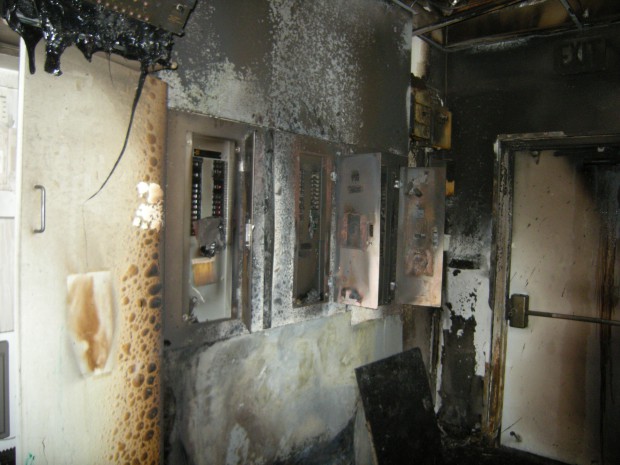
Arson Fire
As many of you are aware, I am often called upon to reconstruct structures after a fire. I came across a situation where a set of furnaces that were on the roof of a commercial structure that had been involved in a fire were obviously compromised when fire entered the ductwork and trashed the units.
To no one’s surprise, the heat damage, the caustic smoke from a fire ruins electronic components which are prevalent in furnaces.
Naturally, replacement of the units is standard operating procedure and so it was included in the estimate. The insurance adjuster insisted that they were fine until proven otherwise and ordered them cleaned at $500 each. I was skeptical and confused.
Doing research on the subject, I found that. Excess heat in a furnace beyond the normal operating temperatures has the potential to ruin all sorts of plastic parts and thermal regulation valves. It can also foul the refrigerant and cause compressor failure. The manufacturer was adamant about having the units replaced. The adjuster said, “Once power is restored if they work then I will not replace them”. That is one way to handle it, I thought.
Here is my conundrum
- In who’s best interest is to leave this obviously compromised units in operation?
- Did I mention that carbon monoxide kills people in high concentrations? It also makes people really sick right before it kills them.
- Who was going to be responsible for the liability of engineering and operating faulty equipment in this case?
- Why on earth would this be allowed?
- In my EMS life, the mechanism of injury was often the reason for intense observation, additional intense testing, and hospitalization in some most cases.
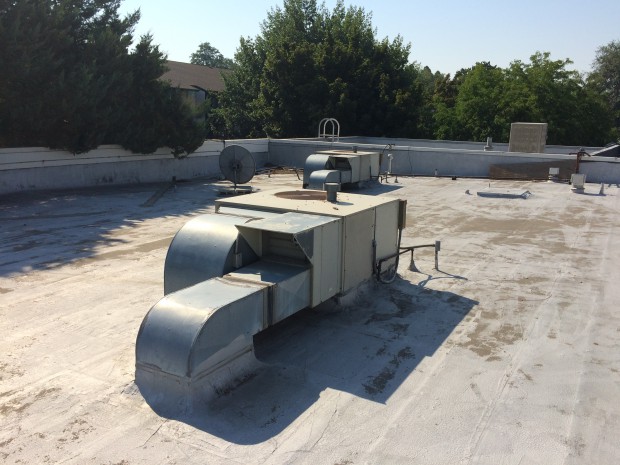
The Roof top units
As the dauntless defender of all things right and fair, I attempted to have the units condemned. Replacing the units is the only way to insure that we will not be subjecting the occupants of this new structure to a life safety issue. I was not going to allow anyone to take responsibility for faulty equipment being turned back on. This lead to a wild goose chase of professional folks and city officials that were not willing or authorized to take action to do the right thing.
My crusade
I wanted to not only have the units replaced but to make it easier for HVAC contractors to call BS when they are sure in their professional opinion that red tagging a faulty unit is in everyone’s best interest. I was going to find the one person with a backbone willing to enforce common sense on the stubborn insurance adjuster.
Turns out this situation rarely occurs. When confronted with the obvious most folks (including insurance adjusters) just do the right thing automatically. In our case we had an adjuster that was hell bent on not replacing those roof top units. In retrospect, had I torn them off the roof and destroyed them right off the bat this situation would have never happened.
- The HVAC contractor has no authority to red flag an item.
- The Fire Department has no authority.
- The Health Department has no authority.
- The City Mechanical Inspectors are reluctant to take any action.
- ‘The GAS company “only provides the gas, they have no authority to condemn a unit”. They can shut off the gas and red tag, but will not.
- The Idaho State Mechanical Inspector can only enforce the code. We tried but could not find a citation in the MEC (Mechanical) code book that gives him the authority.
- The Idaho State Division of Building Safety says it is up to the contractor to use their best judgement.

Levco Man, Dauntless defender of truth & justice
Turns out that a HVAC contractor can RED FLAG anything.
RED TAGGING on the other hand is done by an official. Reluctance to condemn a unit is part of the way that city feels like they are not getting involved with civil disputes.
The resolution is in limbo
I received , then forwarded the letter I was hoping for from my HVAC contractor explaining all of the existing problems and recommendation for replacement. (Normally this could cause any other adjuster to flinch, not this one).
Upon receiving the letter, the adjuster contacted a buddy HVAC guy of his to come check out the units (remember he has a financial stake in leaving the furnaces alone).
In a last gasp effort to get third party recommendations I contacted ASHRE (American Society of Heating, Refrigerating, and Air-Conditioning Engineers). A 50,000-member industry association that should be able to get me what I need. In speaking with a representative they recommended that I contact a local licensed mechanical engineer to provide an evaluation of the units.
As expected the adjuster’s HVAC buddy gives us some ridiculous suggestion that we reuse of these exhausted machines. To no ones surprise he beat around the bush despite multiple bad readings on the cold side and not turning on the hot side or testing combustion gasses for toxic CO gas. Here comes the Mechanical Engineer, Do you smell a law suit?
Another avenue that has not been exhausted is to contact the insurance agent and company that the adjuster represents to explain the situation and provide some pressure to take the appropriate action.
The sickening thing to me is that I also buy insurance from this unnamed company (at the moment) and heaven forbid I should get mixed up in a situation where this adjuster is making ridiculous rulings against my property. Stay tuned, more drama is sure to follow.
Sadly, had a public official been given the authority to condemn the unit from the start, none of this would have happened. To protect the public safety, what a concept. I will be addressing the building officials from around the state in a few days, I will be sure to bring this situation up in conversation. (I did it! Now I feel better but got nowhere.)
POST SCRIPT
It is with great pride that I announce that we got permission replace the units under the insurance claim. TA DA! I get to extend my (We always win streak) It took calm cool heads, a clear vision of what the right thing to do was, and an unwillingness to compromise.
I would classify what happened as a Mexican Standoff, In the end the owner, frustrated with delays and bickering, approached his agent who contacted a supervisor. Communication hopped up the chain of command to the top at the insurance company, and things got resolved rather quickly. I like to think this article had something to do with changing a companies approach to their clients.
- We stuck to our guns, they flinched and did the right thing.
- Do I praise them? I’M NOT CLEAR, SURE I GUESS.
- Do I wish it had gone differently? HELL YES
- Could this have been completely avoided? YES, ABSOLUTELY!
I am not a normal contractor. I had plenty to lose, I played a high stakes game of chicken with my reputation and my clients building. One could say it was a huge distraction and time waster. As a client advocate I get a gold star, but at what cost? What are the odds that I will (get to / have to) work with this guy again. VERY HIGH!
I imagine him snickering next time we meet, “It’s a game Joe, you won this match, relax he’ll say, it’s only business, don’t take these things personally…”. Then again he’ll more than likely continue to give me the cold shoulder, stern, silent, omniscient treatment that he is infamous for.
The take home message:
Be prepared to lose, I am a professional, don’t try this at home!
Your comments are welcome. To ask questions or get more information about remodeling, click here to email me directly, or call 208-947-7261
If you or someone you know is considering remodeling or just wants to speak to a trustworthy remodeling contractor please contact me, you’ll be glad you did.



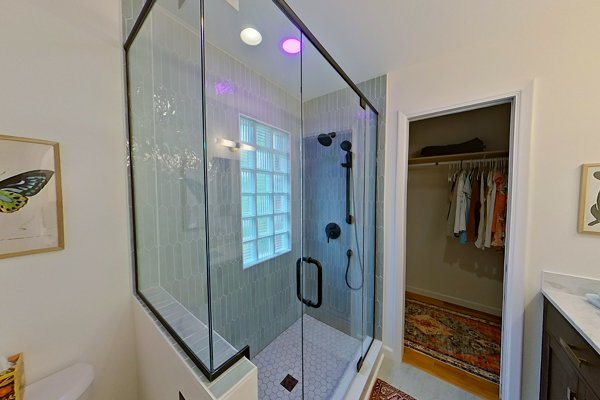
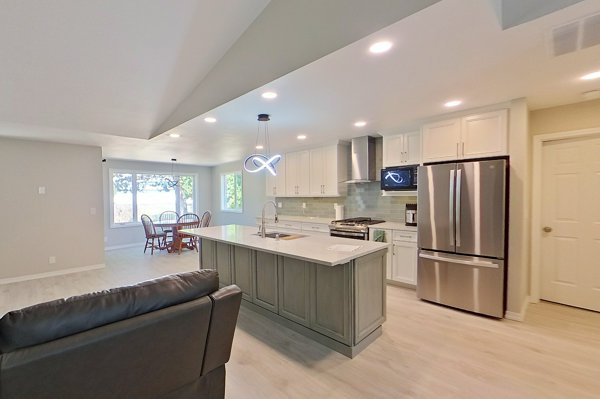
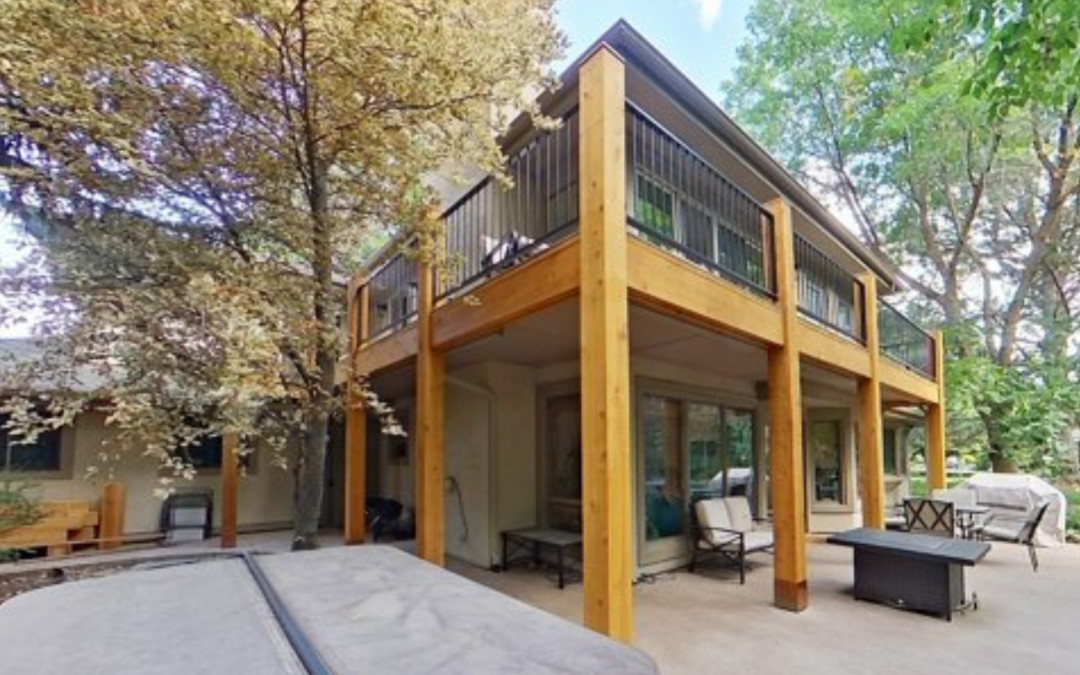

0 Comments